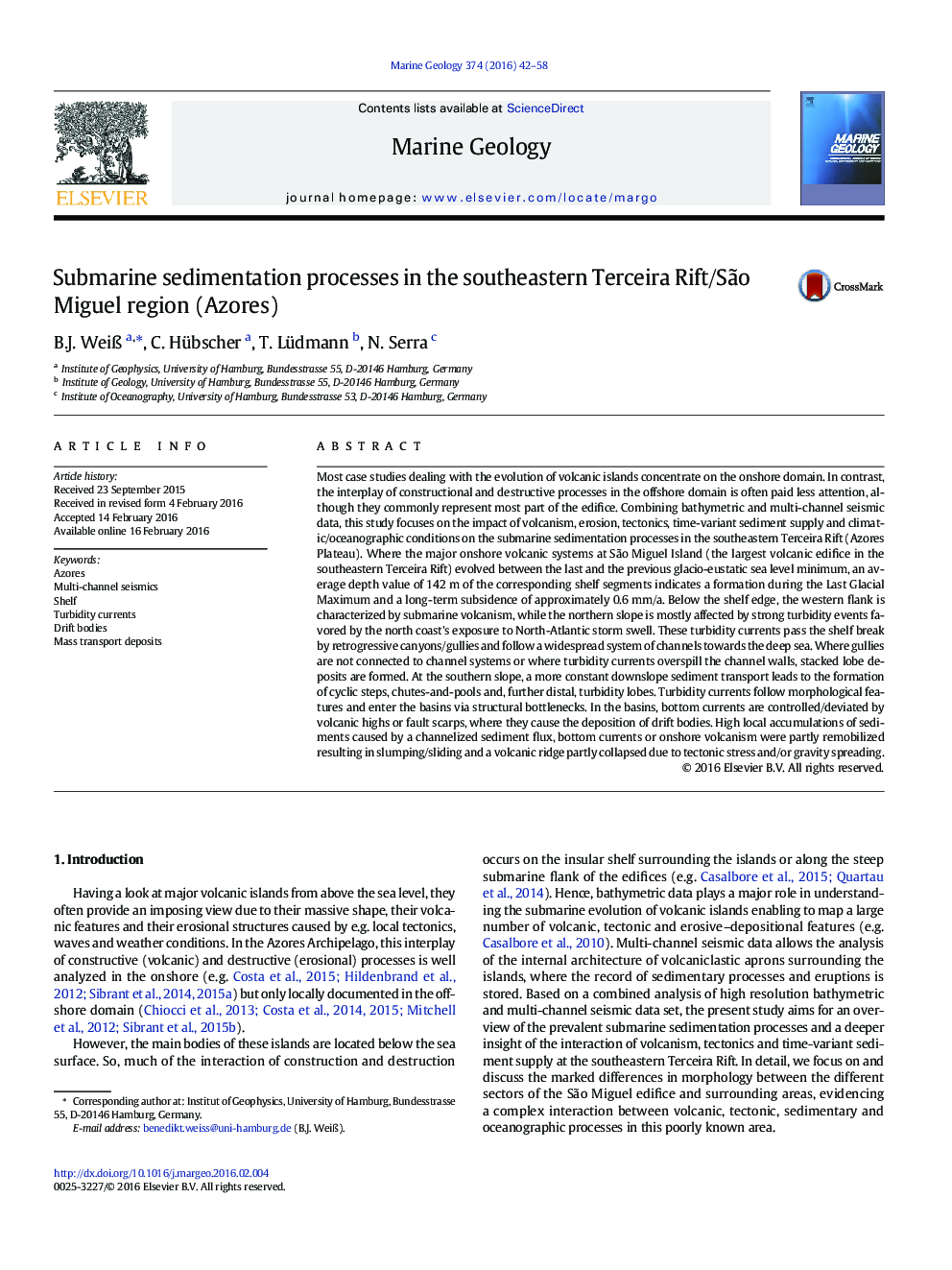| کد مقاله | کد نشریه | سال انتشار | مقاله انگلیسی | نسخه تمام متن |
|---|---|---|---|---|
| 4718129 | 1639078 | 2016 | 17 صفحه PDF | دانلود رایگان |

• Measured shelf break depths indicate a Late-Quaternary island subsidence.
• North-Atlantic storm swell favors strong turbidity events.
• Turbidity currents generate cyclic steps, chutes-and-pools and sediment lobes.
• Submarine mass failures are common features.
• Locations of drift bodies fit modeled oceanographic bottom currents.
Most case studies dealing with the evolution of volcanic islands concentrate on the onshore domain. In contrast, the interplay of constructional and destructive processes in the offshore domain is often paid less attention, although they commonly represent most part of the edifice. Combining bathymetric and multi-channel seismic data, this study focuses on the impact of volcanism, erosion, tectonics, time-variant sediment supply and climatic/oceanographic conditions on the submarine sedimentation processes in the southeastern Terceira Rift (Azores Plateau). Where the major onshore volcanic systems at São Miguel Island (the largest volcanic edifice in the southeastern Terceira Rift) evolved between the last and the previous glacio-eustatic sea level minimum, an average depth value of 142 m of the corresponding shelf segments indicates a formation during the Last Glacial Maximum and a long-term subsidence of approximately 0.6 mm/a. Below the shelf edge, the western flank is characterized by submarine volcanism, while the northern slope is mostly affected by strong turbidity events favored by the north coast's exposure to North-Atlantic storm swell. These turbidity currents pass the shelf break by retrogressive canyons/gullies and follow a widespread system of channels towards the deep sea. Where gullies are not connected to channel systems or where turbidity currents overspill the channel walls, stacked lobe deposits are formed. At the southern slope, a more constant downslope sediment transport leads to the formation of cyclic steps, chutes-and-pools and, further distal, turbidity lobes. Turbidity currents follow morphological features and enter the basins via structural bottlenecks. In the basins, bottom currents are controlled/deviated by volcanic highs or fault scarps, where they cause the deposition of drift bodies. High local accumulations of sediments caused by a channelized sediment flux, bottom currents or onshore volcanism were partly remobilized resulting in slumping/sliding and a volcanic ridge partly collapsed due to tectonic stress and/or gravity spreading.
Journal: Marine Geology - Volume 374, 1 April 2016, Pages 42–58